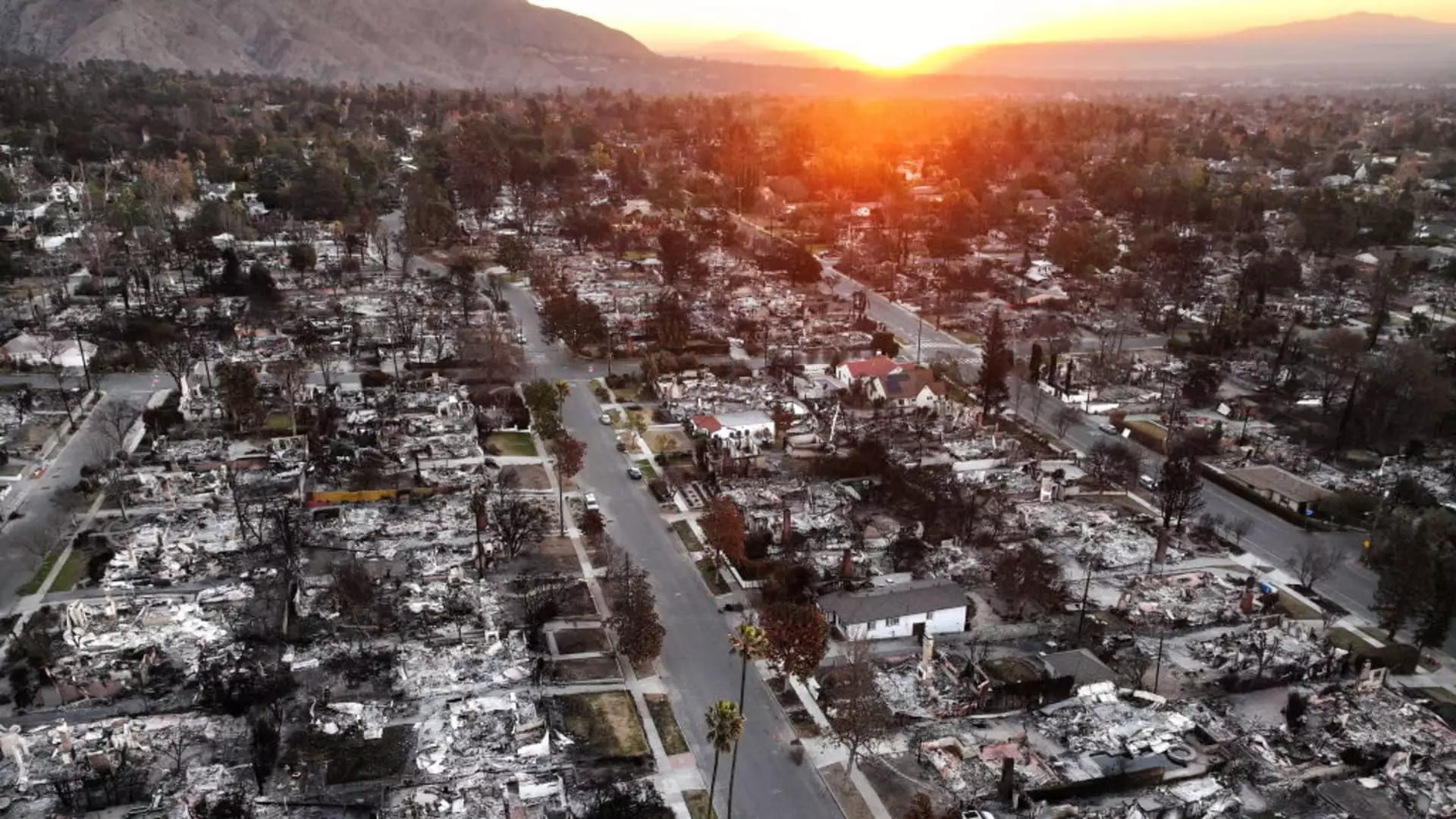The recent wildfires that swept through the Pacific Palisades neighborhood of Los Angeles have left a trail of destruction, compelling many families to face an unimaginable reality. One such family is that of Dr. Damon Raskin, whose home was reduced to ashes amid the chaos of the blazes. Despite the trauma and uncertainty, the Raskins have expressed a profound desire to rebuild. This determination is not just a personal anecdote; it reflects the sentiment shared by thousands of Angelenos grappling with similar losses. These contrasting emotions of despair and resolve capture the essence of resilience that is so often summoned in the face of natural disasters.
The aftermath of these catastrophic events extends beyond individual grief; it poses a monumental challenge for California’s homebuilding sector. With more than 12,000 structures either completely destroyed or severely damaged, there looms in the distance a staggering reconstruction effort estimated to cost roughly $40 billion. The road to recovery, however, will not be an easy one. The complexities of this task encompass a multitude of factors, from environmental concerns to the very logistics of rebuilding lives in the wake of devastation.
Challenges in the Rebuilding Process
Experts in the field acknowledge that while the physical act of reconstruction may appear straightforward, the underlying challenges are formidable. “Rebuilding the homes themselves actually is the easy part,” remarks Tom Grable, a division president at Tri Pointe Homes. The true difficulty lies in preparing the land for development by clearing hazardous debris and restoring it to a buildable condition. This requires meticulous planning and execution, ensuring that the process adheres to safety regulations and environmental standards.
In a bid to expedite the cleanup and reconstruction efforts, California Governor Gavin Newsom and Los Angeles Mayor Karen Bass have stepped in with executive orders aimed at cutting through the bureaucratic red tape. These executive actions suspend certain permitting requirements, allowing for quicker debris removal and subsequent rebuilding. However, while regulatory relief is a step forward, it does not erase the cultural and emotional scars left behind by the fires.
Engaging with the Rebuilding Community
For families like the Raskins, the journey to rebuild involves navigating a complex network of builders, architects, and insurance providers. Dr. Raskin has begun this multi-faceted process, reaching out to contacts in the building community to explore fire-resistant materials that will secure his new home against future risks. The evolving regulations have prompted the introduction of enhanced fire safety codes, ushering in a new standard for construction in high-risk areas. While this shift may represent progress, it also complicates the rebuilding efforts, demanding that families engage in research and make informed choices to ensure their safety.
Industry players, from large construction firms to smaller local builders, will play pivotal roles in the reconstruction landscape. While larger companies specialize in extensive developments, the reliance on local contractors who bring a wealth of experience in custom builds may emerge as a defining factor in the quality and pace of the recovery.
In parallel with the physical restoration of homes, the financial ramifications of the fires loom ominously. Homeowners find themselves entangled in the complicated web of insurance claims, often hindered by companies that, burdened by losses from past disasters, have tightened coverage. Many are directed to the California FAIR Plan, designed as a last resort for those unable to secure traditional insurance. Yet, as claims begin to pour in, the limitations of available funds are placed under scrutiny, raising challenging questions about accountability and financial support.
For families like the Raskins, whose home was valued significantly beyond the coverage limits of their insurance, the future is fraught with uncertainty. They now confront the daunting task of not only reclaiming their losses but also navigating the intricate process of dealing with claims while managing day-to-day life in temporary accommodations. With estimates pointing to a multi-year rebuilding timeline, the emotional and psychological toll cannot be overstated.
Ultimately, the road ahead for the firestorm survivors will require a symbiotic relationship among homeowners, builders, and local governments. As communities rally to support one another, there lies an opportunity for collective healing and growth. The rebuilding effort, although complex and laden with difficulties, can also pave the way for the establishment of fire-resilient neighborhoods, mingling innovation with compassion. The endurance exhibited by families like the Raskins serves as a poignant reminder of the human spirit’s capacity to overcome adversity, transforming tragedy into a catalyst for renewal and a safer future. As Los Angeles stands on the brink of an extensive rebuild, the commitment to creating homes that stand against the ravages of nature is not only essential but a profound testament to resilience.

